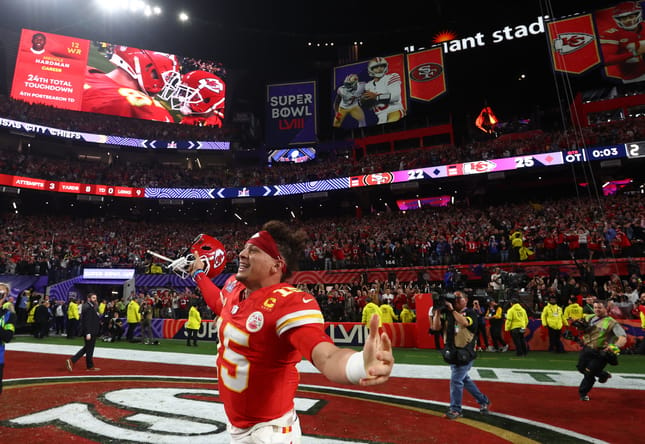The NFL Rule Change No One’s Talking About (And How to Exploit It)

There’s been a lot of talk this offseason about possible rule changes, including unsuccessful attempts to ban the tush push and change the playoff format. The new kickoff rules have gotten some attention, as they seem likely to result in more kickoff returns and thereby have added some value to the kick returner role.
But one significant rule change has received very little attention so far: starting this season, the NFL will have a new overtime format.
In most ways, the new regular-season overtime rules match the playoff overtime rules of the past two seasons. Now, a touchdown on the opening drive no longer guarantees victory: each team gets a chance to possess the ball. If both teams score the same number of points on their first drives, the game continues, and the next score wins.

This format featured prominently in LVIII, when the 49ers chose to take the ball first in overtime, scored a field goal, but surrendered a touchdown. Afterward, various analytics experts tried their hand at crunching the numbers on the 49ers’ decision, and the results were incredibly close, with neither offense nor defense emerging as the obvious choice for a team that wins the coin toss.
Indeed, the 49ers’ analytics department had encouraged head coach Kyle Shanahan to take the ball first. Across the field, the Chiefs’ analytics staff had encouraged head coach Andy Reid to do the exact opposite. In the current playoff overtime format, there is no obvious best choice between offense and defense.

However, there remains an important distinction between regular season and playoff overtime rules, which likely tips the scales towards one of the two strategies: in the regular season, overtime will still last only 10 minutes. After this, if the score is even, the game ends in a tie.
Why does this seemingly minor distinction affect the optimal strategy, you might ask? To answer this, we need to understand the pros and cons of offense-first and defense-first strategies.
First, the benefit of playing defense first in overtime is an informational advantage: when you get the ball, you already know how the other team fared on offense, so you know how many points you need to tie/win.

For instance, if the opponent scored a field goal, you know that punting is out of the question: you need to score. This effectively gives you four downs to move the chains rather than the usual three plus a punt, a major advantage for any offense. In Super Bowl LVIII, this informational advantage was key to the Chiefs’ victory.
On the other hand, the main advantage of playing offense first is that IF the score is tied after each team has possessed the ball, you get the ball in a sudden-death contest with a chance to score to win the game. This is potentially an enormous advantage, but it relies on the condition that the teams match scores on their first possessions.
The analytics show that, in the postseason overtime format, these two advantages more or less cancel each other out, and the odds are almost 50-50 for the offense and the defense. However, in the case of the regular season format, there is a major wrinkle: in a span of 10 minutes, there is often time for only two possessions.

The average length of an NFL drive is a bit shy of three minutes, but you might expect this to increase if one team is trying to run the clock down before giving the ball back to the other. As a result, in many cases, the team that started with the ball might not have time for a second possession.
If so, this favors the strategy of playing defense first in the new regular-season overtime format. It will be interesting to see if teams adopt this strategy during the 2025 season.
